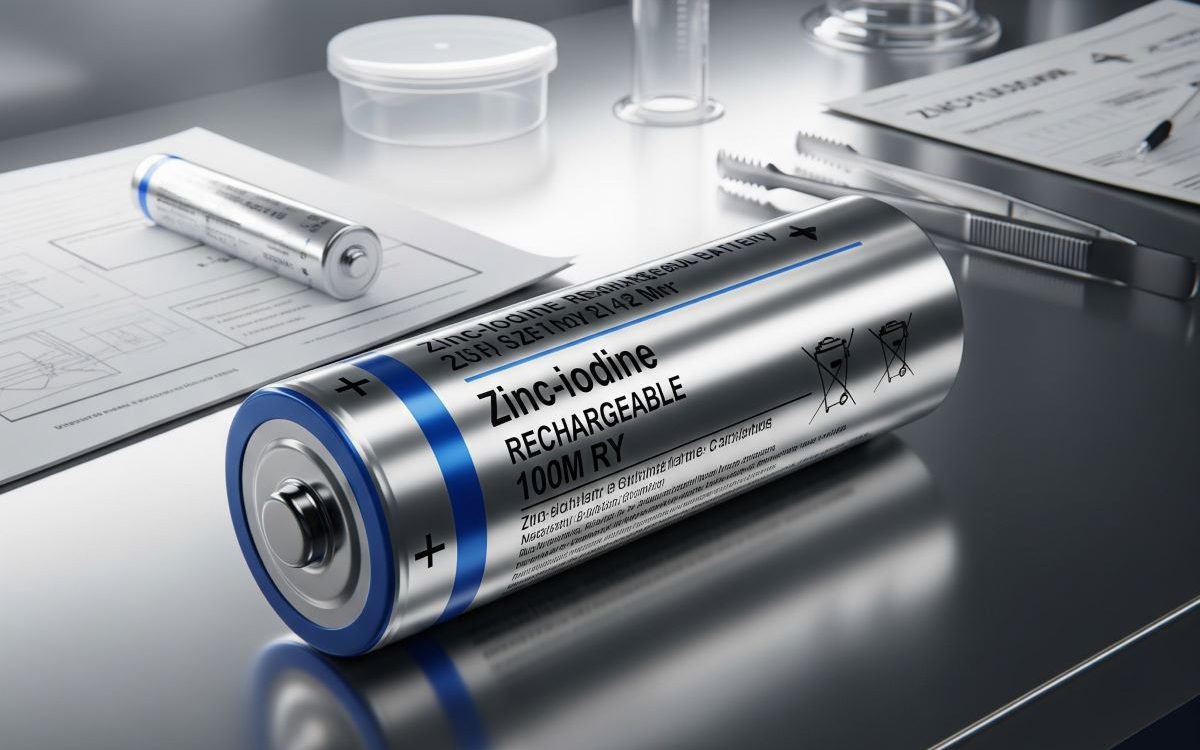
A breakthrough in zinc-iodine battery performance and design
They are inherently safe, low-cost to produce, and environmentally friendly. On paper, zinc-iodine batteries have all the qualities needed to become the ideal candidate for next-generation energy storage.
But there’s a catch. To date, scalable and stable manufacturing methods for their electrodes remain a challenge.
Now, researchers at the University of Adelaide in Australia, working with colleagues from Kent State University in the U.S., have developed a new high-performance dry electrode for aqueous zinc-iodine batteries. The new design achieves an areal capacity of 15.8 mAh/cm² and retains 88.6% of its initial value after 750 charge and discharge cycles.
How zinc-iodine batteries work
Zinc-iodine batteries are rechargeable systems in which iodine (I₂) acts as the source of active species. The cells operate through a redox reaction: iodine undergoes a chemical conversion at the cathode, while zinc deposits or dissolves at the anode. During discharge, I₂ gains electrons and reduces to I⁻, while zinc loses electrons and oxidizes to Zn²⁺.
This technology offers several advantages for the energy storage sector. Zinc is abundant, and the electrolyte is non-flammable. More importantly, the chemistry provides a high theoretical capacity, 820 mAh/g or 5,855 mAh/cm³, combined with a low electrode potential (−0.76 V vs. standard hydrogen electrode) and good air stability.
These strengths have made zinc-iodine batteries the focus of growing research in recent years. Yet finding the right cathode remains a critical obstacle.
The problem lies not just in the materials but also in the fabrication process. Traditional wet mixing leads to iodine sublimation, low active material loading, poor electrode density, and significant shuttle effects from polyiodide species. These drawbacks limit both energy density and the practicality of zinc-iodine battery systems.
A new approach to electrode manufacturing
“We developed a new electrode technique that avoids conventional wet mixing of iodine,” said Professor Shizhang Qiao from the University of Adelaide, who led the research team. “We blended the active materials as dry powders and rolled them into thick, self-supporting electrodes. At the same time, we added a small amount of a simple chemical, 1,3,5-trioxane, to the electrolyte. It forms a flexible protective film on the zinc surface during charging.”
This protective layer plays a vital role. Its function is to prevent the formation of dendrites (needle-like zinc structures that can compromise battery stability) on the anode during charge and discharge.
The dry process enabled high-mass-loading iodine cathodes, reaching 100 mg of active material per cm². The performance gains were immediate, with the system achieving an areal capacity of 15.8 mAh/cm².
“Pouch cells using the new electrodes retained 88.6% of their capacity after 750 cycles, while coin cells retained nearly 99.8% after 500 cycles,” said Han Wu, research associate at the School of Chemical Engineering at the University of Adelaide.
The results were published in the journal Joule.